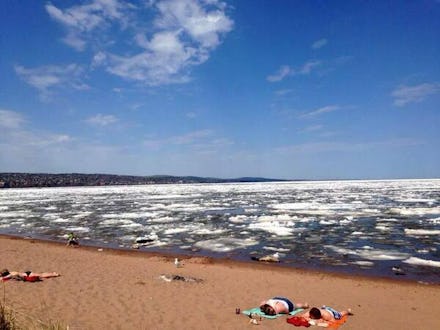It's June, and Here's What Lake Superior Still Looks Like

The news: Summer is finally here — except at Lake Superior.
The National Oceanic and Atmospheric Administration (NOAA) announced last Saturday that all of the Great Lakes were finally ice-free — breaking an unprecedented seven-month streak of ice coverage. Typically, ice on the lakes melts by the first week of May; thanks to the polar vortex, it lasted well past Memorial Day this year.
A record-breaking winter: Despite warming temperatures, this year's ice has stood out in duration, extent and thickness. In early March, ice on the Great Lakes reached 92.5% coverage — the second highest on record. And, according to NOAA's 40 years of data, ice has never lasted this late into the year. "We saw the ice as early as November 25 and now into June," NOAA scientist George Leshkevich told the Washington Post. "In terms of duration I would think it's up there, if not at the top of the chart [in the historic record]."
Image Credit: NOAA
The incongruous sight of ice in June has been met by nearby residents with resignation, incredulity and humor:
Far-reaching consequences: While locals might enjoy sunbathing by the frozen lakes, there will be some unpleasant effects of the long-lasting ice. According to estimates by a University of Michigan research team, surface water temperatures over the deepest sections of Lake Superior will be 6 degrees Fahrenheit colder than normal by August. That means the chilly water will combine with the warm, humid air to generate fog all summer long. Giant fog banks like this were already sighted a couple of weeks ago: